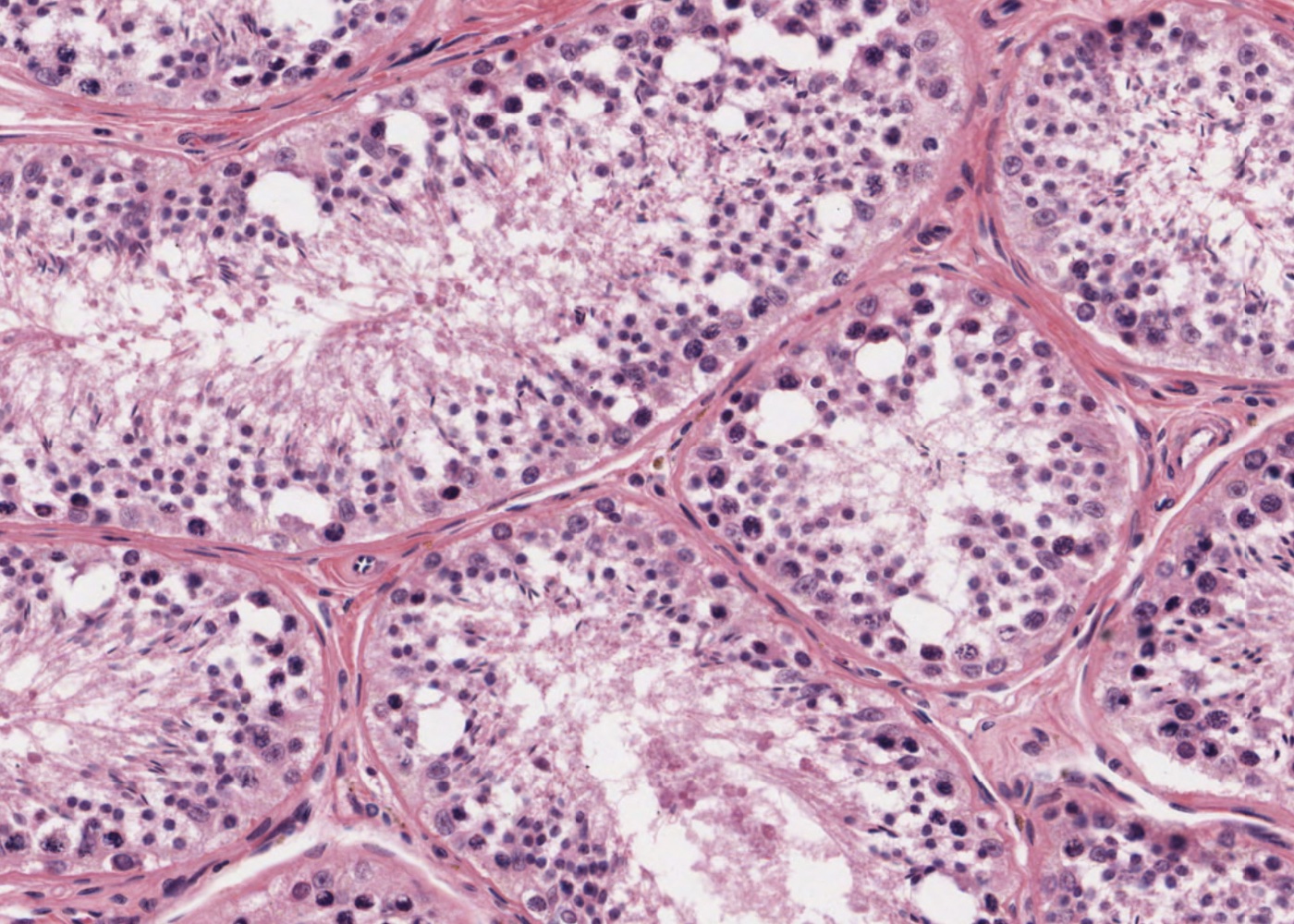The male reproductive system consist of the paired testes, genital ducts (including the epididymis and ductus deferens), accessory sex glands (seminal vesicles, prostate gland and bulbourethral glands) and the penis.
Learning outcomes
After studying all of the resources available, your knowledge of the “Male Reproductive System” should include the following:
- Recognise and name the structures of the male reproductive system.
- Understand the gross structure of the testis.
- Identify all of the cells of the seminiferous epithelium.
- Distinguish between spermatogenesis and spermiogenesis and describe the progression of sperm through the complete process of spermatogenesis.
- Identify Sertoli cells and describe their main functions.
- Identify Leydig cells (interstitial cells of the testis) and describe their main functions.
- Understand the hormonal control of spermatogenesis.
- Identify the ducts involved in the passage of sperm from the testes to the penis, and describe what role each plays in the maturation of sperm.
- Identify the accessory sex glands and know their role in nourishing and protecting the sperm after ejaculation.
- Distinguish between sperm and semen, and know the components of semen.
- Understand the structure of the penis and how blood flow causes erection.
- Understand the role of the sympathetic and parasympathetic nervous systems in erection and ejaculation.

